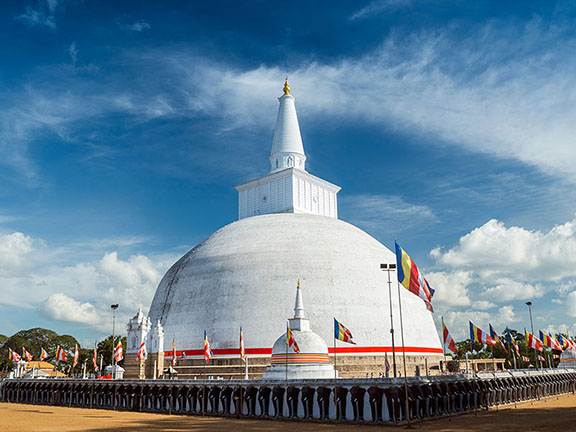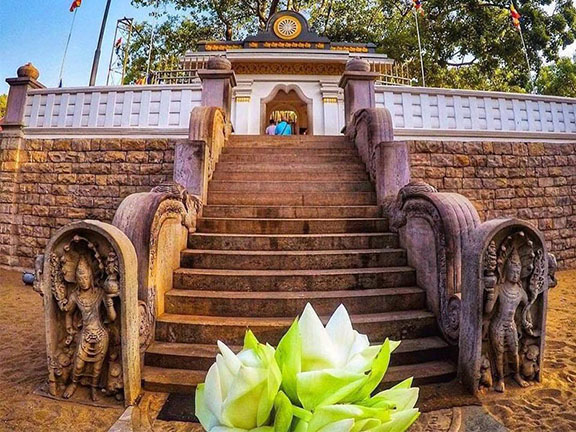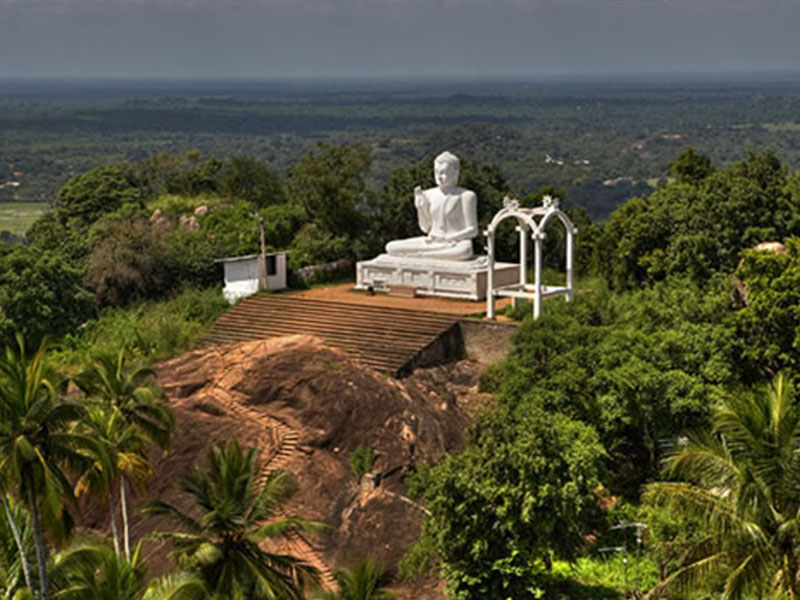Anuradhapura Day Tour
Anuradhapura is belongs to the North Central Province in to Sri Lanka. Anuradhapura is one of the ancient capitals of Sri Lanka, famous for its well-preserved ruins of ancient Lankan civilization. The city, now a UNESCO World Heritage Site, lies 205 km north of the current capital Colombo in Sri Lanka. In the sacred city of Anuradhapura and in the vicinity are a large number of ruins. The ruins consist of three classes of buildings, dagobas, monastic buildings, and pokuna (ponds). The city had some of the most complex irrigation systems of the ancient world, situated in the dry zone of the country the administration built many tanks to irrigate the land. Most of the civilians are Sinhala, while Tamils and Sri Lankan Moors live in the district.
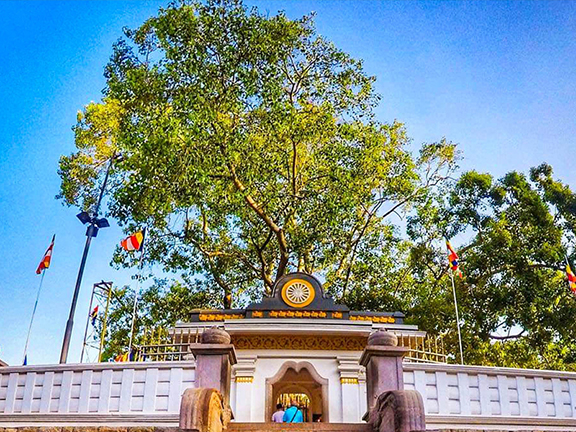
-
Jaya Sri Maha Bodhi
The Jaya Sri Maha Bodhi is one of the most ancient trees which are living even today standing tall in the Mahamewna Gardens in Anuradhapura in Sri Lanka. The tree is believed to have sprouted from a cutting brought from Bodh Gaya in India, where Gautama Buddha had attained enlightenment. The tree is an authentic and living link to Gautama Buddha and is often respected as the oldest tree in history which has a recorded date of the plantation.
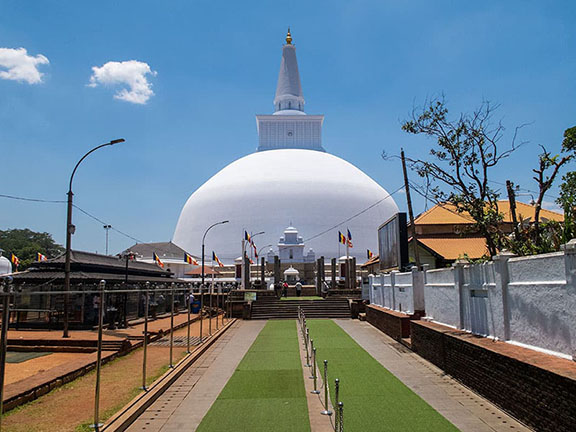
-
Ruwanwelisaya
The Ruwanweliseya stupa is one of the largest stupas or dagobas, which is in the heart of the beautiful heritage city of Anuradhapura. This magnificent stupa was built by King Dutugamunu, who was hailed to be the hero of the island. The Ruwanweliseya stupa is also known as the Maha stupa and is one of the most adorned structures of the people of Sri Lanka.
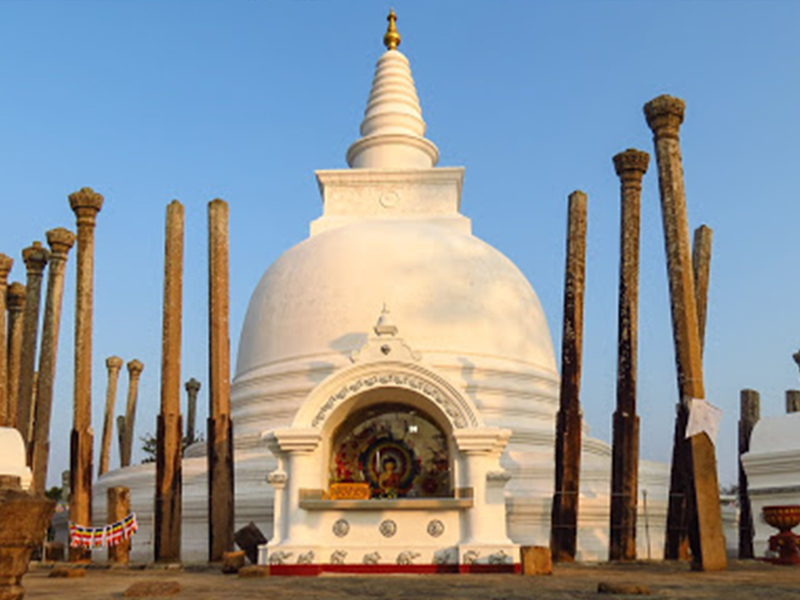
-
Thuparamaya
Thuparamaya, also known as Thuparama, is the first stupa which was constructed in Sri Lanka after the introduction to Buddhism and is in the beautiful city of Anuradhapura. The ancient stupa of Thuparamaya was built during the reign of the King Devamnampiyatissa somewhere in the 3rd Century BCE and is said to enshrine the right collar bone of Gautama Buddha. The ruins of the complex today cover an area of approximately three and a half acres of land.
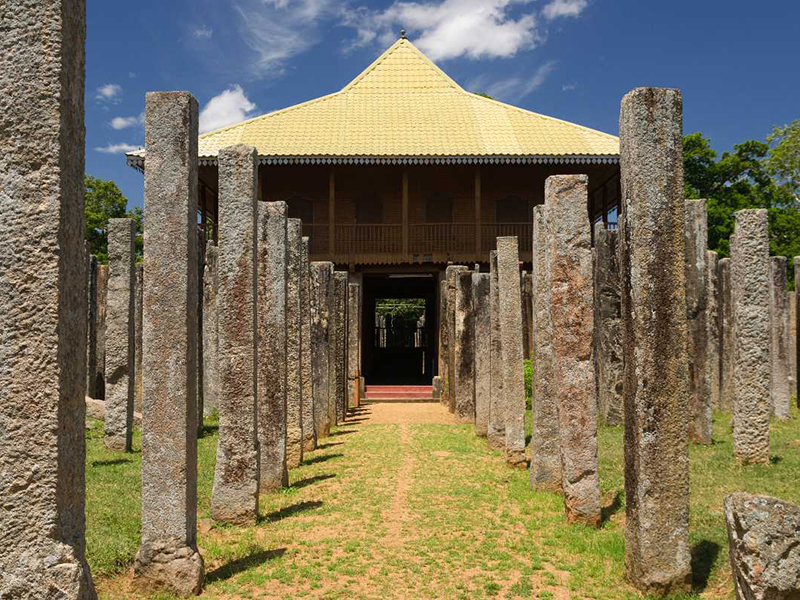
-
Lovamahapaya
The Brazen Palace or Lovamahapaya is a 2000-year-old palace constructed by King Dutugemunu in 2nd century B.C and had 1600 stone columns that supported nine stories reaching 150 feet and sides of 400 feet length with 1000 rooms. It is also known as the Brazen Place because of the bronze tiles that were used on its roof.
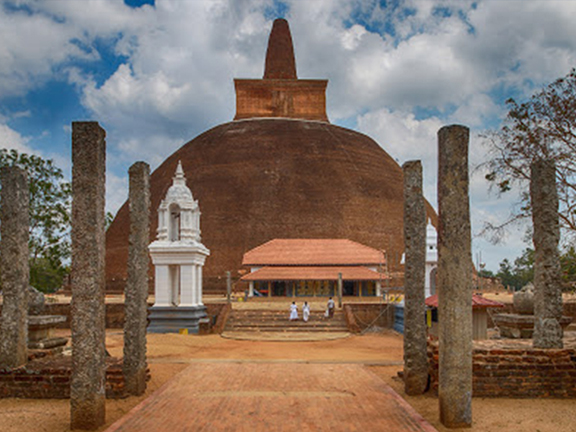
-
Abhayagiri Vihara
The Abhayagiri Vihara is one of the most beautiful and exciting structures which is in the atmospheric setting of Anuradhapura. The grand scale of the monastery ruins is genuinely breathtaking and can be viewed at any time, be it the break of dawn or dusk. The Abhayagiri Vihara has a beautiful and shimmering glow.
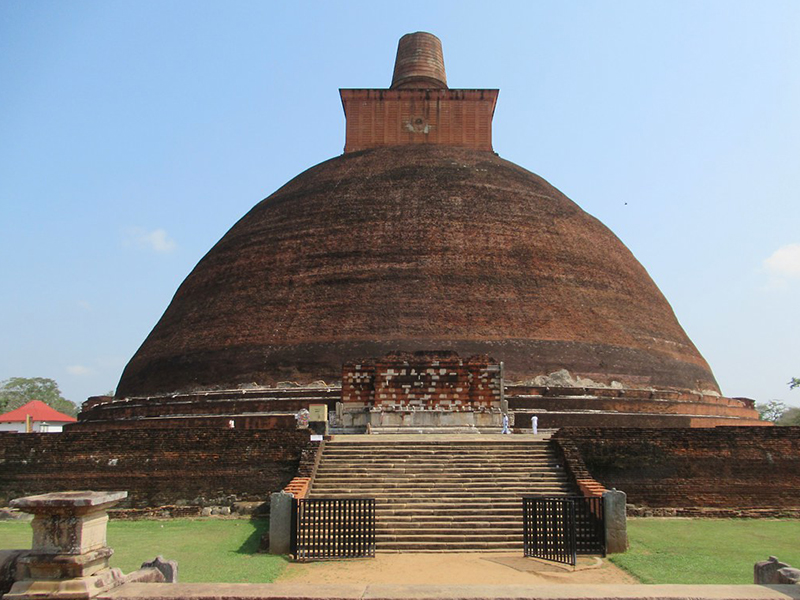
-
Jetavanaramaya Dagoba
The Jetavanarama Dagoba’s massive dome rises above the entire eastern part of Anuradhapura. Built in the 3rd century by Mahasena, it may have originally topped 120m, but today is about 70m – similar to the Abhayagiri. When it was built it was almost certainly the third-tallest monument in the world, the first two being Egyptian pyramids. Its vast, bulbous form is unplastered and said to consist of more than 90 million bricks.
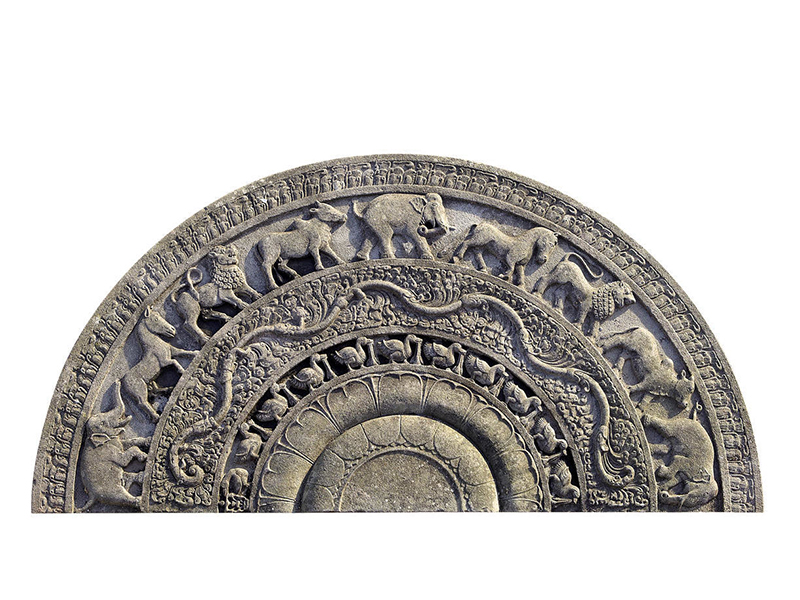
-
The moonstone (Sandakada Pahana)
The moonstone (Sandakada Pahana) is a permanent feature of the buddhist building of all historical periods. This is a semi circular piece of stone which stood at the foot of a flight of steps in most buddhist buildings. Although the moonstone is generally semi circular, Sometimes you can come across square moonstones. It is thought that the moon stones originated as blank square stone and later developed in to a semi circular shape. This again developed to include multitude of carved decorations in later stages.
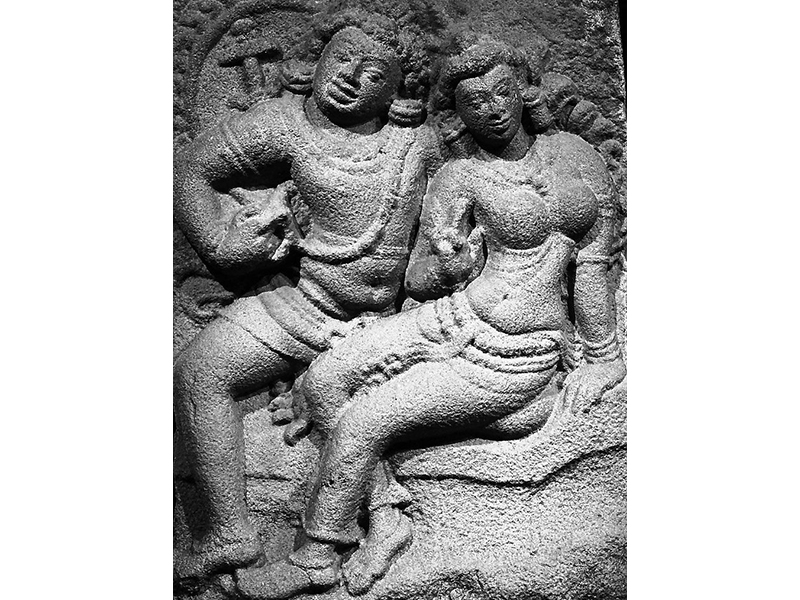
-
Isurumuniya
Sri Lanka's ancient capital city, Anuradhapura is home to relics, stupas and rocky hills that bring an aura of serenity. Isurumuniya is one of the granite, marble and stone structures located near Tissa Wewa, and this Buddhist temple boasts of architecture and sculptures that showcase the emancipation of the artists.
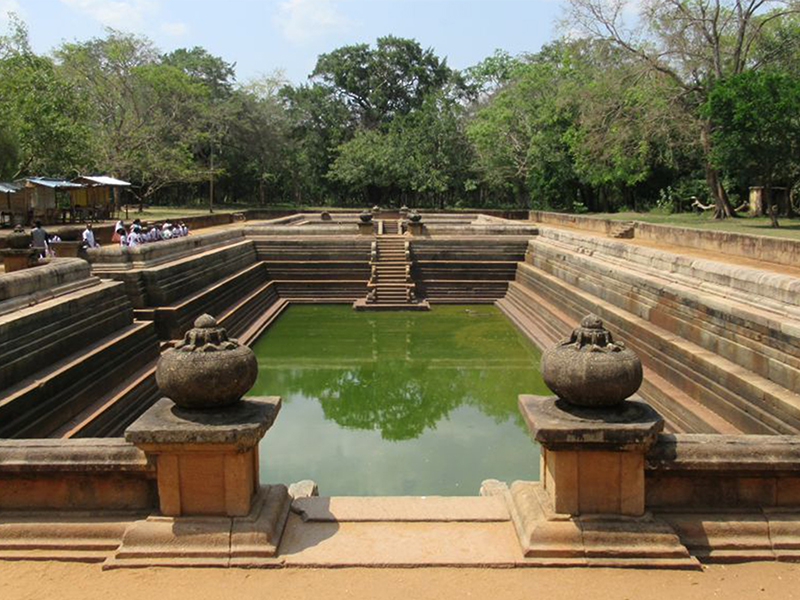
-
Kuttam Pokuna
One of the best specimen of bathing tanks or pools in ancient Sri Lanka is the pair of pools known as Kuttam Pokuna (Twin Ponds/Pools). The said pair of pools were built by the Sinhalese in the ancient kingdom of Anuradhapura. These are considered one of the significant achievements in the field of hydrological engineering and outstanding architectural and artistic creations of the ancient Sinhalese.
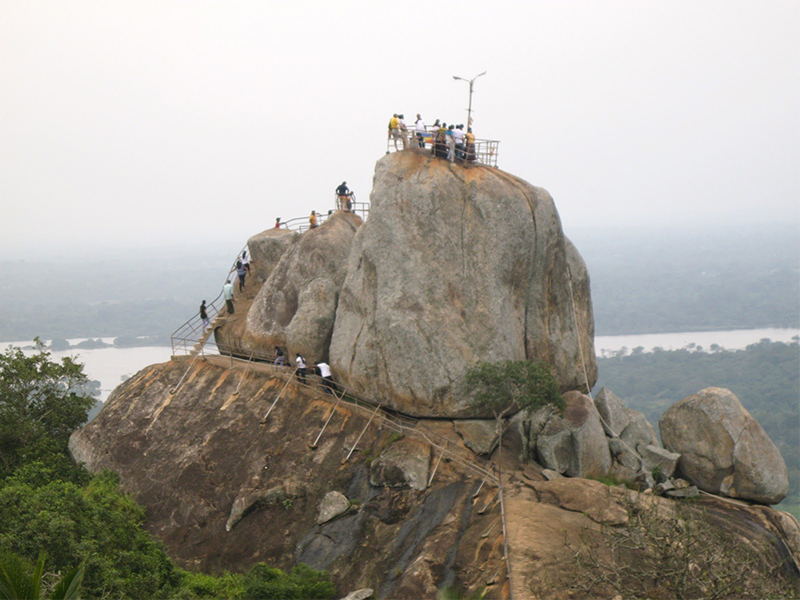
-
Mihintale Mountain
Mihintale Mountain, with the arrival of Buddhism in Sri Lanka, began to serve as a residential area for the venerable monks headed by Arahath Mahinda Mahathera. But soon, with the royal patronage, the sanctuary housed a multitude of with monastic buildings-stupas, uposathgharas, bodhigharas- to serve the monks. Sixty eight cave dwellings provided the monks shade and shelter. Mihintale, the sanctuary for many thousands of laymen as well as holy men, had all the facilities and amenities for basic living.

